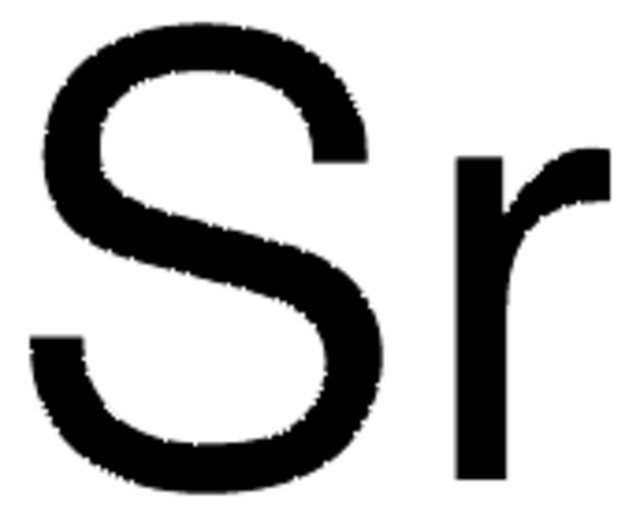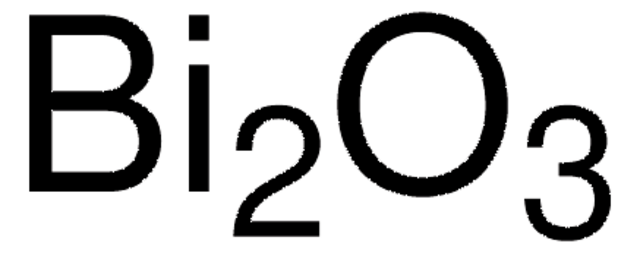452386
Bismuth
beads, 1-5 mm, 99.999% trace metals basis
Synonym(s):
Bismuth element, Bismuth-209
About This Item
Recommended Products
vapor pressure
<0.1 mmHg ( 20 °C)
Quality Level
assay
99.999% trace metals basis
form
beads
resistivity
129 μΩ-cm, 20°C
particle size
1-5 mm
bp
1560 °C (lit.)
mp
271 °C (lit.)
density
9.8 g/mL at 25 °C (lit.)
SMILES string
[Bi]
InChI
1S/Bi
InChI key
JCXGWMGPZLAOME-UHFFFAOYSA-N
Looking for similar products? Visit Product Comparison Guide
Related Categories
accessory
wgk_germany
nwg
flash_point_f
Not applicable
flash_point_c
Not applicable
ppe
Eyeshields, Gloves, type N95 (US)
Certificates of Analysis (COA)
Search for Certificates of Analysis (COA) by entering the products Lot/Batch Number. Lot and Batch Numbers can be found on a product’s label following the words ‘Lot’ or ‘Batch’.
Already Own This Product?
Find documentation for the products that you have recently purchased in the Document Library.
Customers Also Viewed
Articles
The unique properties of the rare-earth elements and their alloys have brought them from relative obscurity to high profile use in common hightech applications.
Our team of scientists has experience in all areas of research including Life Science, Material Science, Chemical Synthesis, Chromatography, Analytical and many others.
Contact Technical Service




